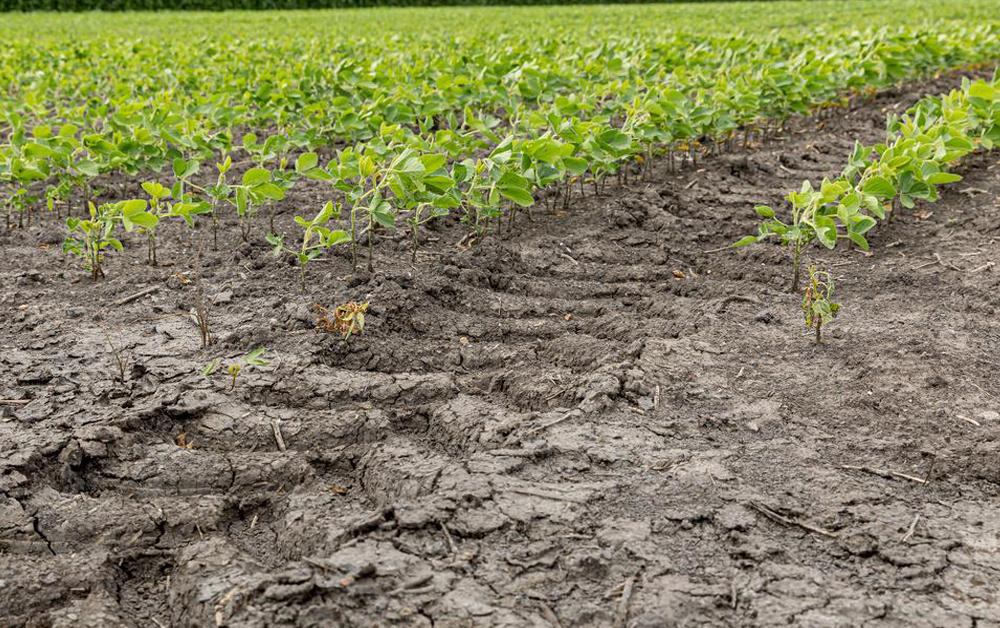Soil compaction is a significant concern in agriculture, affecting crop health and productivity. This condition occurs when soil particles are compressed, reducing pore spaces necessary for air, water, and root movement. Heavy machinery, livestock traffic, and certain tillage practices are common causes behind compaction, creating denser soil that restricts crop roots from accessing vital nutrients and water. Recognizing soil compaction as a pressing issue is crucial for farmers seeking sustainable and efficient agricultural practices.
When soil is compacted, it not only limits plant growth but also impacts overall farm productivity. Compaction creates barriers for roots, reducing water infiltration and nutrient availability while increasing runoff and erosion risk. Over time, this can lead to yield loss and a decrease in soil biodiversity, making it harder to maintain a healthy crop cycle. Understanding both the causes and effects is essential for implementing practical, effective management strategies.
Recognizing Signs of Soil Compaction in Agricultural Fields
Identifying soil compaction early on allows for more effective intervention. Compacted soil tends to be harder, less porous, and can cause visible issues with crop emergence. In compacted areas, you may notice stunted growth, reduced yields, or even patches of standing water after heavy rainfall. By understanding these signs, farmers can take timely action to preserve soil health.
Other indicators of soil compaction include poor root development and patterns, restricted water movement, and an increase in surface erosion. Farmers can benefit from regularly assessing soil condition, especially if signs of compression appear. Here are key indicators of compressed ground conditions:
- Restricted root growth: poor root depth and density in crops.
- Reduced water infiltration: increased surface runoff and pooling.
- Inconsistent crop emergence: variations in crop density across fields.
- High erosion rates: more soil loss after rainfall events.
- Waterlogging: certain areas retain water longer than expected.
How Soil Compaction Impacts Water and Nutrient Uptake
When soil is compacted, water infiltration decreases, meaning less moisture reaches the root zone. This reduction in water availability stresses plants, especially in dry periods, as they struggle to access moisture. Compacted soils also hinder oxygen diffusion, disrupting nutrient uptake and root function, which can result in stunted growth and nutrient deficiencies.
Moreover, soil biodiversity suffers in compacted conditions. Essential microorganisms responsible for nutrient cycling become less active, further compromising nutrient availability. In this way, soil compaction can reduce crop resilience, making it challenging for plants to thrive in the long term.
Techniques for Reducing and Preventing Soil Compaction
Reducing and preventing soil compaction requires a combination of methods. Farmers can adopt conservation tillage practices, control machinery traffic, and introduce crop rotation with deep-rooting plants to naturally break up compacted layers. In some cases, deep tillage may be necessary to address severe compression, though it should be done cautiously to avoid further impact on soil structure.
Practical Tips to Prevent Soil Compaction:
- Controlled traffic farming (CTF): minimizes soil disturbance.
- Conservation tillage: reduces excessive soil turnover.
- Plant deep-rooting cover crops: to improve soil structure.
- Add organic matter: compost or manure enhances soil quality.
- Check soil moisture: avoid working on wet soils.
Best Equipment and Practices to Avoid Compaction in Farming
Choosing appropriate equipment and timing operations well can minimize compaction risk. Low-pressure tires, dual tires, and tracked vehicles help distribute weight evenly, lessening soil impact. A controlled traffic system also prevents random soil disturbance by keeping machinery movement within set lanes, preserving overall soil structure.
Recommended Practices to Reduce Soil Compaction:
- Low ground-pressure equipment: distributes machinery weight.
- Tracked vehicles: work effectively on heavy, wet soils.
- Limit field passes: reduce traffic to avoid excessive soil impact.
- Follow controlled traffic lanes: keep soil disturbance consistent.
- Monitor soil condition: test for compression regularly.
How AgNote Can Help Manage Soil Health
AgNote’s farm management software enables farmers to track and monitor soil health easily. By logging field activities, soil conditions, and machinery use, farmers can proactively manage compaction issues and ensure a balanced soil structure. Start your free 7-day trial with AgNote today to optimize your soil health practices and enhance productivity.
